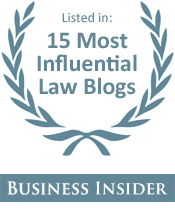Whistleblower Law Blog
Rule 345 Provides a New Shield for IRS Whistleblowers
A U.S. Tax Court judge on Tuesday allowed three whistleblowers to hide their identities in court for reasons that ranged from death threats to a fear of professional ostracism.
The rulings by Judge Diane L. Kroupa appear to be the the first decisions publicly reached under the Tax Court’s Rule 345, which in 2012 established a formal procedure for tax whistleblowers to request anonymity.
In all three cases, Judge Kroupa said the whistleblowers’ concerns outweighed the public’s interest in knowing their identities. Taken together, her decisions show that Rule 345 can provide strong protection in a wide range of circumstances.
What’s more, the government didn’t oppose whistleblower anonymity in any of the three cases.
Two of this week’s cases were strikingly similar: After raising concerns about tax fraud by their employer — a company with ties to terrorism and organized crime — both whistleblowers said they faced intimidation by armed men. Later, while helping the Internal Revenue Service toward an eventual recovery of more than $30 million, both received death threats via lawyers.
Both whistleblowers hired security experts to protect their families when traveling abroad; the government even offered one whistleblower a place in its witness protection program. “There is no better evidence of the credibility of the death threat and the real risk that the whistleblower faces,” said Judge Kroupa.
Both whistleblowers were in Tax Court to seek judicial review of awards they had received from the IRS in return for the information they provided; presumably each felt somewhat shortchanged. The IRS didn’t oppose their motions for anonymity.
Judge Kroupa did not address the merits in either case, but she approved the Rule 345 motions without ado — and kept the record sealed in both cases.
“The nature and severity of potential harm that could befall the whistleblower outweighs the societal interest in knowing the whistleblower’s identity,” she concluded, using identical language in both opinions.
The third Rule 345 case was far less cinematic, but probably more significant. A retiree had told the IRS about potential tax fraud at a former employer; the IRS responded that it couldn’t move forward on the claim. The retiree then asked the Tax Court to review the case — but requested anonymity under Rule 345.
Compared to death threats, the retiree’s reasons seemed tame: The former employer “could withwithhold or terminate the whistleblower’s retirement benefits. … Additionally, the whistleblower alleges that, if the whistleblower’s identity is revealed, the whistleblower will suffer professional ostracism, harm and job-related harassment because other potential employers will unlikely want to hire or employ a known tax whistleblower.”
Judge Kroupa was openly skeptical, noting in particular that the retiree’s benefits are administered by an independent trustee with fiduciary obligations. “We have reservations about the alleged harm,” she said.
Still, she said, “we will err on the side of caution and grant the whistleblower’s request to proceed anonymously. The whistleblower has satisfied the whistleblower’s factual burden” under Rule 345, she held.
Evidently, then, Rule 345 has a fairly low bar for justifying anonymity. And the IRS didn’t oppose the whistleblower’s motion in this case, either.
Judge Kroupa — who in two of the opinions bemoaned “a lack of whistleblower caselaw” — now has set her own roadmap for tax whistleblowers who seek anonymity under Rule 345. Other judges will likely follow her lead, particularly when the IRS doesn’t oppose the motion.
After almost two years of silence, Rule 345 is off to a late start, but a good one.
Tagged: Enforcement Bodies, Fraud Types, Internal Revenue Service (IRS), Tax Fraud



